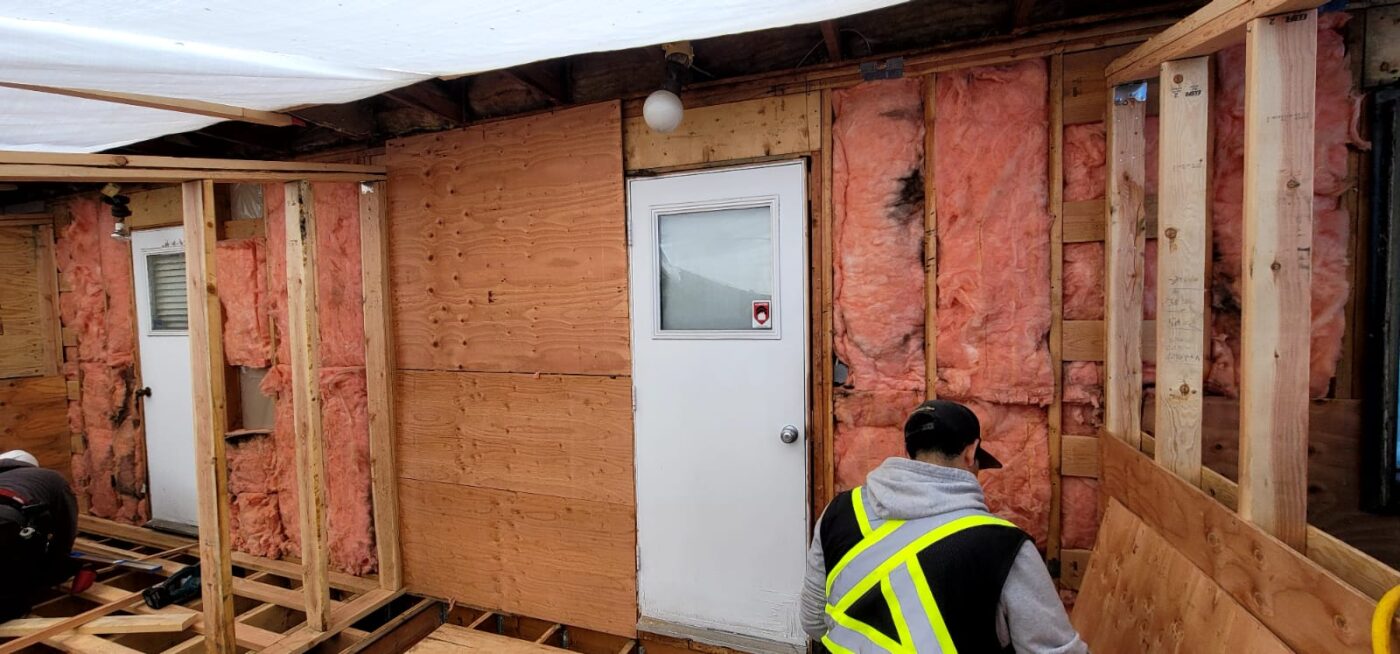Sheathing Installation Process: A Comprehensive Guide to Protecting Your Home
When it comes to building or renovating a home, one of the most critical steps is the sheathing installation process. Sheathing refers to the layer of material that is applied to the exterior of your home’s framework, providing structural support and protection from the elements. This essential step in the construction process ensures that your home is safe, durable, and energy-efficient.
The sheathing installation process plays a pivotal role in enhancing the overall structural integrity of your home. Not only does it provide support for roofing and siding, but it also acts as a barrier to moisture, wind, and temperature extremes, preventing damage over time.
In this comprehensive guide, we will explore the sheathing installation process, the various materials used, and how it contributes to the protection and strength of your home. Whether you’re building a new home or renovating an existing one, understanding the importance of sheathing is key to maintaining a safe, long-lasting structure.
What is Sheathing?
Sheathing is a crucial element in the sheathing installation process. It refers to the layer of material that is applied to the structural framework of a building, typically covering the exterior walls, roof, and floors. Sheathing provides support to the structure and acts as a foundational barrier between the interior of the home and the outside environment.
Materials Used
There are several materials commonly used in the sheathing installation process, each offering specific benefits for durability, insulation, and protection. These include:
-
Plywood: Known for its strength and versatility, plywood is one of the most popular sheathing materials used for both walls and roofs.
-
OSB (Oriented Strand Board): A cost-effective alternative to plywood, OSB is commonly used for sheathing, providing similar strength and performance.
-
Foam Board: Often used as insulation sheathing, foam board helps enhance energy efficiency by offering superior insulation properties.
-
Fiberboard and Cement Board: These materials are sometimes used for specific projects or to improve resistance to moisture and fire.
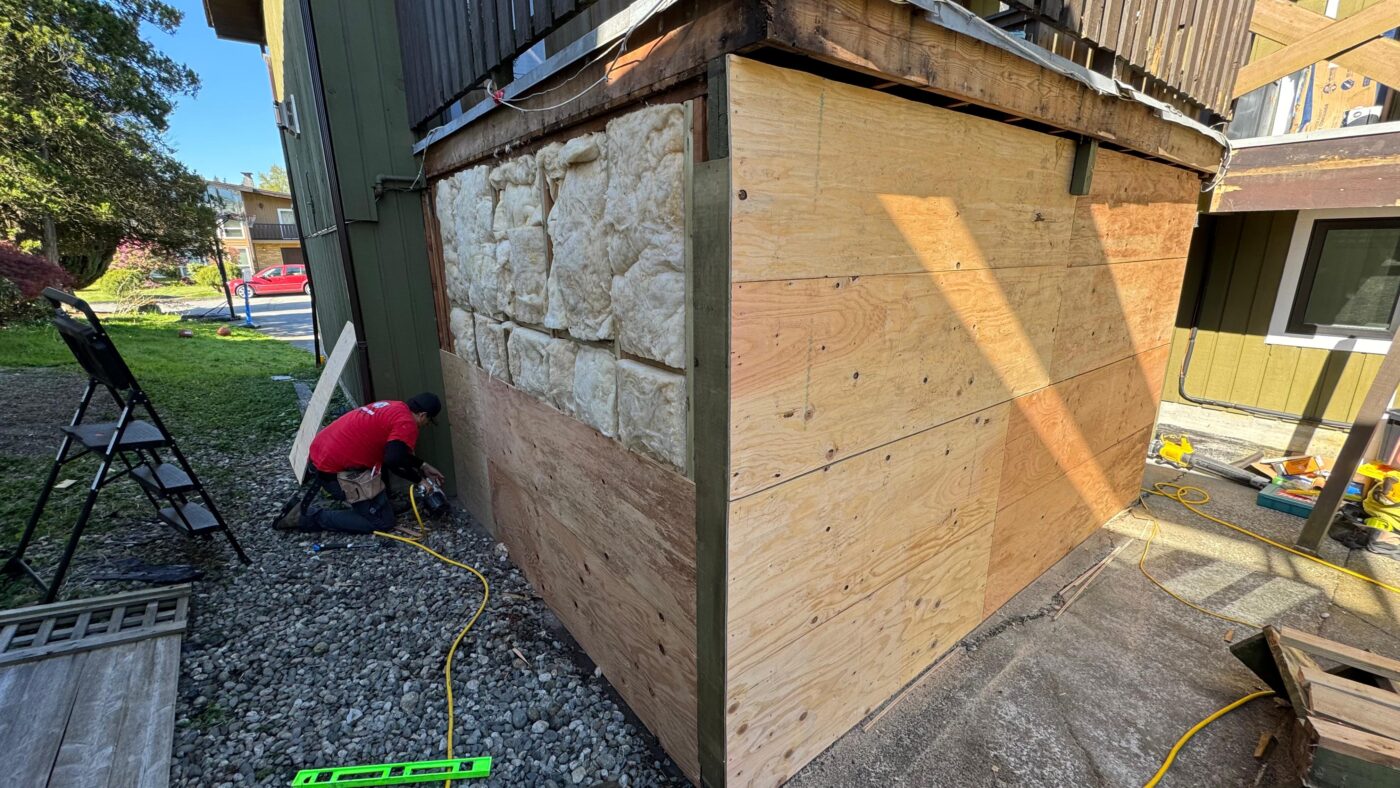
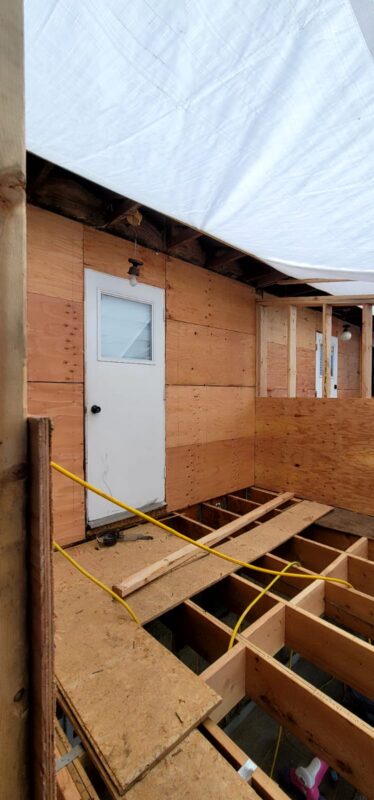
Function
Sheathing plays a critical role in the sheathing installation process. It acts as a barrier that protects the interior of the home from environmental factors like moisture, wind, and temperature changes. Additionally, sheathing provides structural stability by supporting the frame of the home and ensuring that the building is properly sealed against the elements. By preventing water infiltration, sheathing also helps avoid issues like wood rot and mold growth, contributing to the overall durability of the home.
The Importance of Sheathing in Construction
Structural Integrity
Sheathing plays a vital role in providing structural support during the sheathing installation process. It helps to stabilize the framework of a building, reinforcing the walls, roof, and floors. Without proper sheathing, the structure would lack the necessary strength to withstand external forces like wind and seismic activity. By securing the frame, sheathing contributes to the overall strength of the home, ensuring its stability over time.
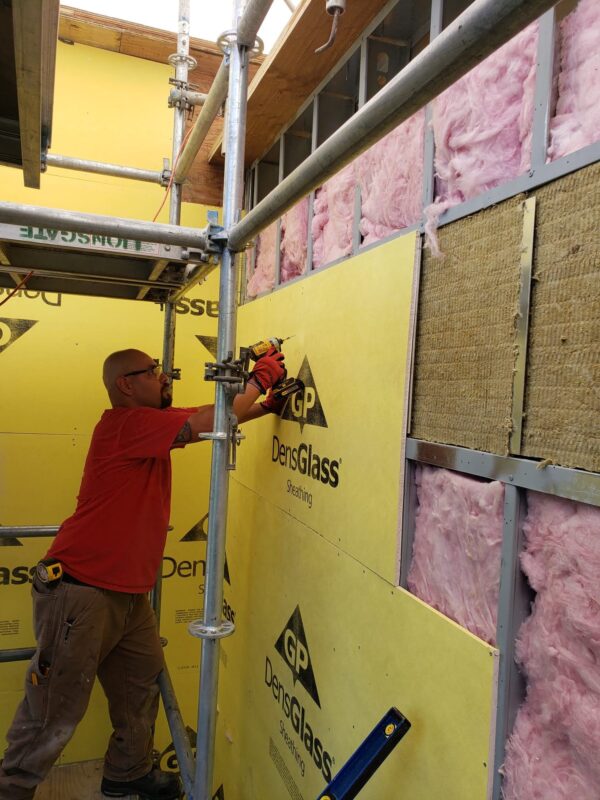
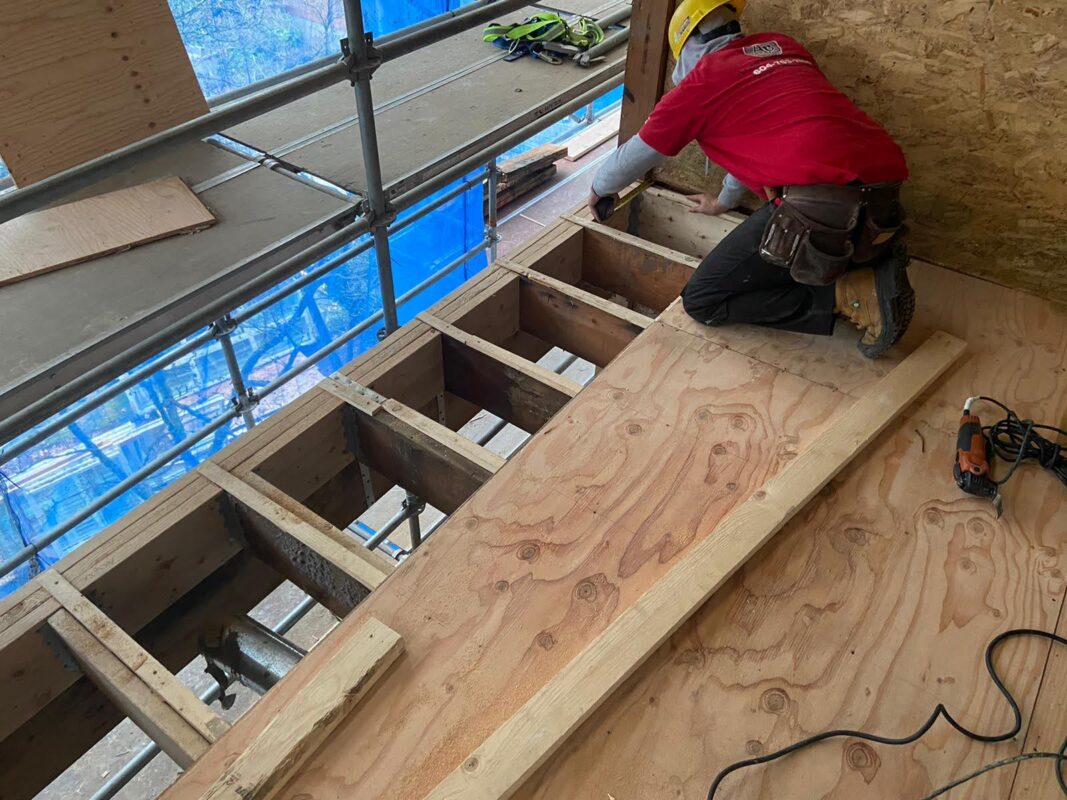
Protection from Weather
One of the primary functions of sheathing is to shield the home from harsh weather conditions. During the sheathing installation process, a protective layer is applied to guard against wind, rain, snow, and other environmental factors. Sheathing acts as a barrier that prevents moisture from penetrating the walls and roof, reducing the risk of water damage, mold growth, and wood rot. By keeping the elements at bay, sheathing ensures the longevity and safety of the structure.
Energy Efficiency
In addition to providing structural support and protection, sheathing also contributes to a home’s energy efficiency. During the sheathing installation process, materials like foam board or insulated sheathing can be used to improve thermal resistance. This helps maintain a comfortable indoor temperature by reducing heat loss in the winter and keeping the interior cool in the summer. Proper sheathing can lead to significant savings on energy bills by improving the overall insulation of the home.
Sheathing Installation Process
Preparation
The sheathing installation process begins with thorough preparation to ensure the materials are applied correctly and effectively. First, the building’s frame must be inspected to ensure it’s structurally sound and free of any defects. Any necessary repairs should be completed before moving forward with sheathing. Once the frame is ready, the surface must be cleaned of any dirt, debris, or moisture that could interfere with adhesion. Proper weather conditions should also be considered, as the sheathing installation should be done in dry conditions to prevent moisture from affecting the materials.
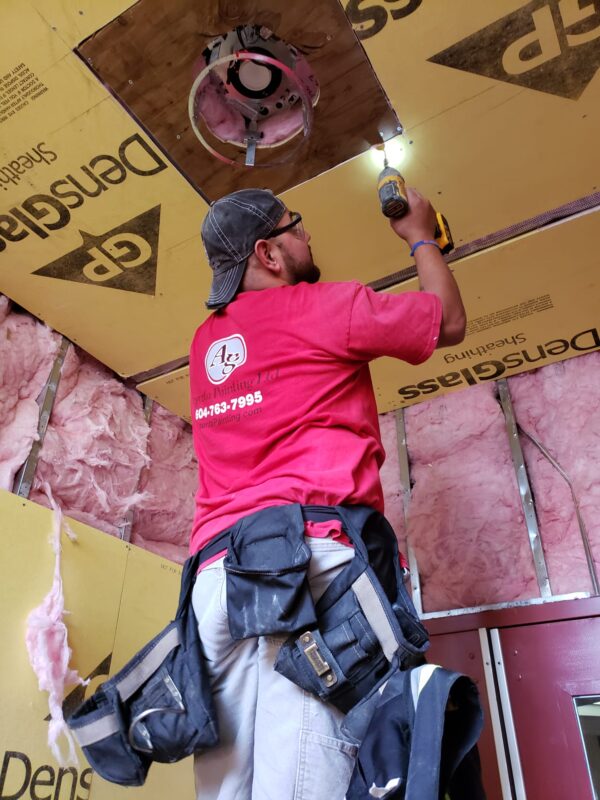
Timing
Timing is crucial in the sheathing installation process. Sheathing should be installed early in the construction process, typically after the framing but before the roofing and siding are applied. This ensures that the structure is protected during the later stages of construction, especially when the roof and siding are being worked on. Installing sheathing at this stage also provides the necessary support for the other exterior components, allowing them to be applied securely. The installation should be done as soon as possible to protect the building from the elements and ensure the structure is properly sealed.
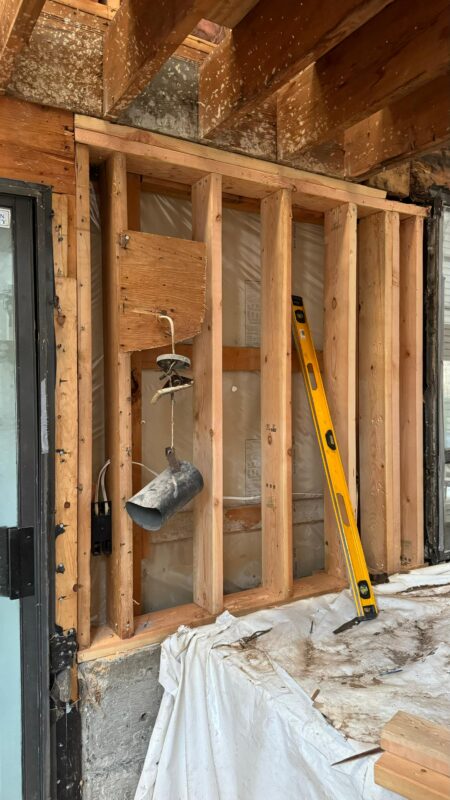
Installation Steps
Once the home is properly prepared, the sheathing installation process can begin. The first step is to cut the sheathing material to fit the dimensions of the structure. Typically, plywood, OSB, or foam board is used, depending on the home’s needs and the desired properties (e.g., insulation, durability). The sheathing is then aligned carefully with the frame, ensuring it fits snugly against the structure. The materials are fastened securely using nails, screws, or specialized adhesives to prevent any shifting or warping over time. Each panel of sheathing is installed tightly together to ensure continuous coverage and a solid barrier against the elements.

Common Sheathing Materials and Their Benefits
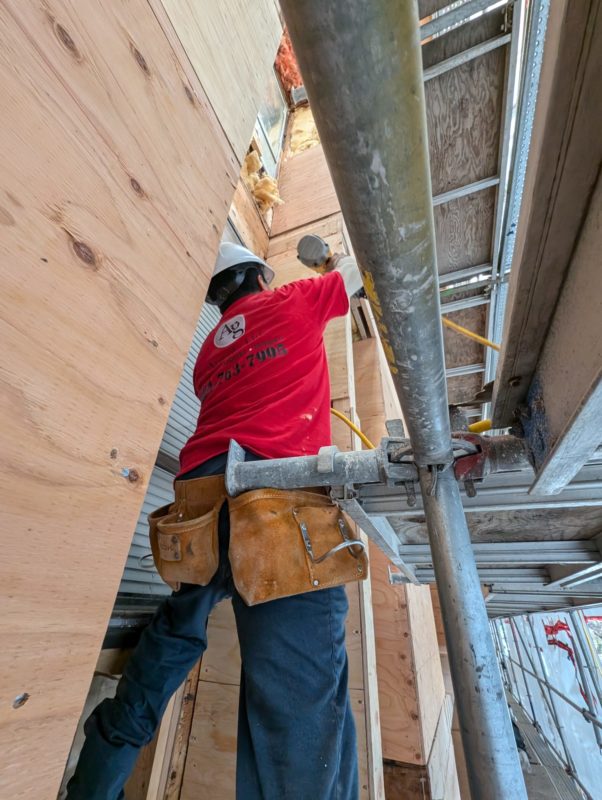
OSB (Oriented Strand Board)
OSB is another common material used in the sheathing installation process and is often chosen for its cost-effectiveness. OSB is made from wood strands that are pressed and bonded together, providing a durable and strong material at a more affordable price than plywood. It offers many of the same benefits as plywood, including structural strength and moisture resistance, but at a lower cost, making it a popular choice for residential homes and other cost-conscious projects.
Foam Board
Foam board is frequently used in the sheathing installation process when insulation is a primary concern. It is lightweight and easy to work with while providing excellent thermal resistance. Foam board helps improve a home’s energy efficiency by reducing heat transfer, keeping the interior cooler in the summer and warmer in the winter. Its insulating properties make it an ideal choice for homes in climates with extreme temperatures. Additionally, foam board sheathing can help reduce the overall energy costs of a home.
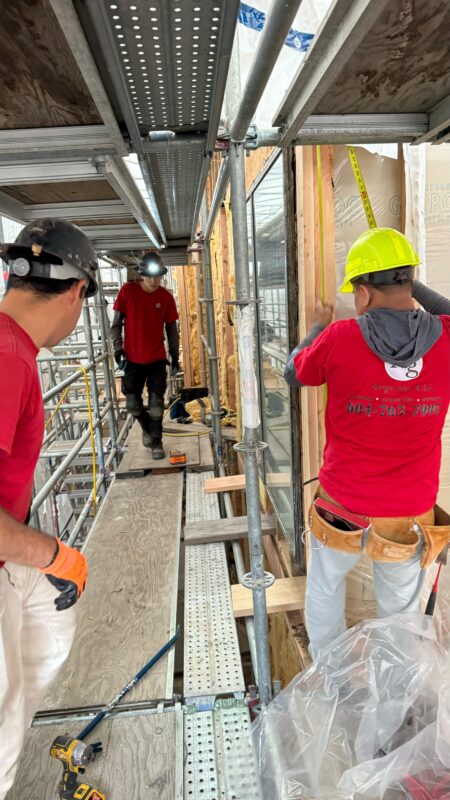
Plywood
Plywood is one of the most popular and widely used materials in the sheathing installation process due to its strength, durability, and versatility. Made from layers of wood veneer bonded together, plywood provides excellent structural support and is resistant to cracking and warping. It’s commonly used for sheathing walls, roofs, and floors in both residential and commercial construction. Plywood also offers good moisture resistance, making it a reliable choice for homes exposed to varying weather conditions.
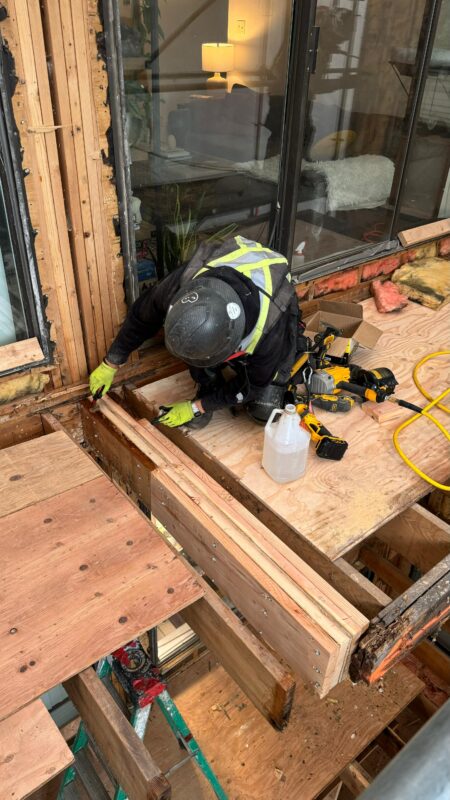
Other Materials
In addition to plywood, OSB, and foam board, there are several other materials that may be used in the sheathing installation process, depending on specific project requirements. These include:
-
Fiberboard: A dense material that offers soundproofing qualities and is resistant to fire and moisture, making it ideal for commercial buildings or areas with high fire risk.
-
Cement Board: Often used in areas that require extra moisture protection, such as bathrooms or areas exposed to high humidity, cement board offers durability and resistance to rot, making it ideal for areas that need extra protection.
While these materials are less common than plywood or OSB, they offer specialized benefits in specific applications where added durability or protection is needed.
Signs That Your Sheathing Needs Attention
Visible Damage
One of the first signs that your sheathing may need attention is visible damage. Over time, sheathing can deteriorate due to various factors, including temperature fluctuations and physical impact. Common indicators of damaged sheathing include warping, cracking, or softness. If you notice these issues on your home’s exterior, it’s a clear sign that your sheathing may no longer be performing effectively. Addressing these issues early in the sheathing installation process can prevent more serious structural damage later on.
Moisture Exposure
Moisture is a major concern when it comes to sheathing. If your sheathing has been exposed to water, it can lead to mold, mildew, and wood rot. Prolonged exposure to moisture can weaken the sheathing and the building’s structure. During the sheathing installation process, it’s important to ensure that the materials used are moisture-resistant, but if damage has occurred, it’s essential to address it immediately. Visible signs of dampness, discoloration, or mold are all indicators that moisture has infiltrated your sheathing.
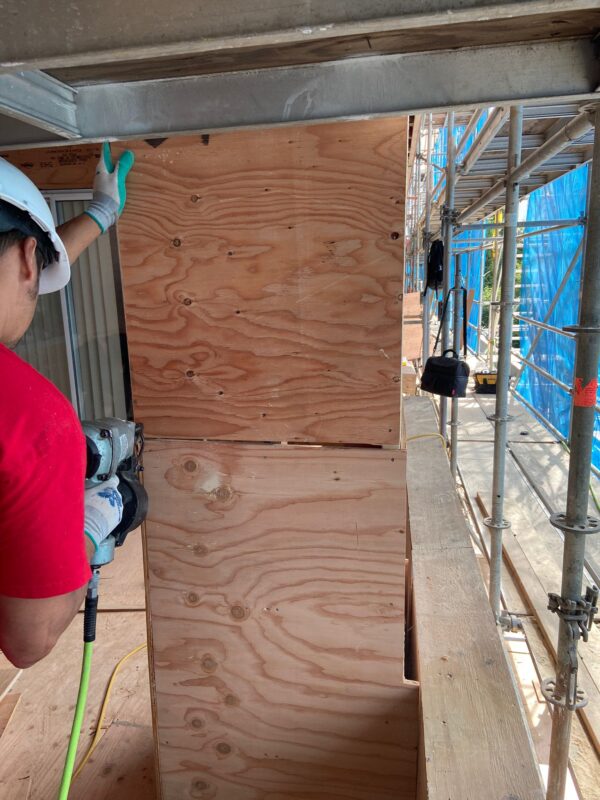
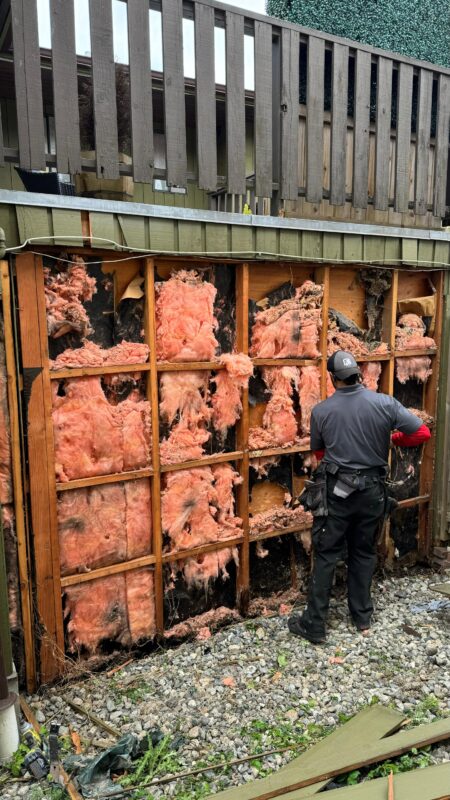
When to Replace
In some cases, the damage to your sheathing will be too severe for repair. If you notice large areas of rot, significant cracking, or warped sections, it’s time to consider replacing the sheathing. The sheathing installation process is meant to create a strong, durable exterior, but once the material has been compromised, replacing it is the best option to ensure the long-term protection of your home. Delaying replacement can lead to further issues, including more extensive structural damage and higher repair costs.
Professional vs. DIY Sheathing Installation
Benefits of Professional Installation
Hiring professionals for the sheathing installation process ensures that the job is done correctly and up to code. Professionals possess the experience, knowledge, and tools necessary to handle the complexities of sheathing installation. They understand how to properly align, secure, and fasten materials, ensuring that the sheathing is durable and will provide long-lasting protection for your home.
Moreover, professionals are familiar with local building codes and safety standards, which can help prevent potential issues that may arise with an improper installation. As noted by US Quality Construction, “The installation of roof sheathing demands precise planning, expertise, and knowledge, as it forms the base of the entire roofing system.” By hiring experts, you ensure that your home is well-protected and meets all construction standards.
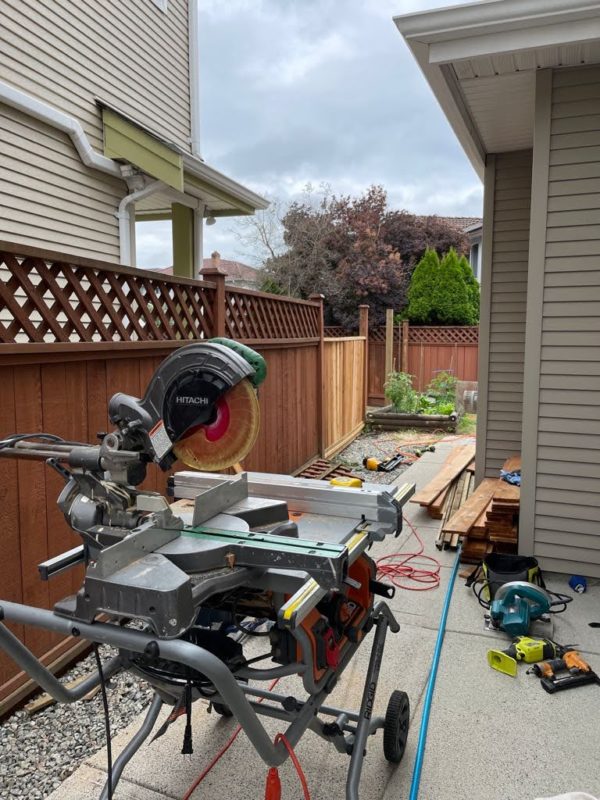
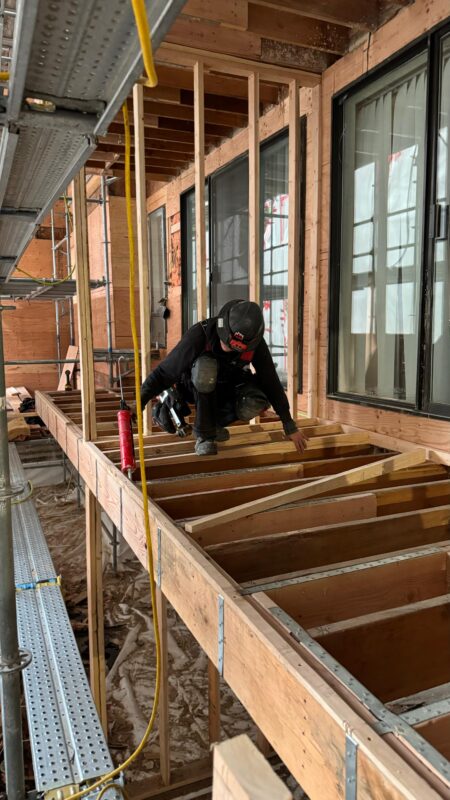
DIY Considerations
For experienced homeowners, sheathing installation may seem like a manageable DIY project. However, it’s important to be aware of the challenges and risks involved. The sheathing installation process requires precise measurements, proper material selection, and knowledge of building codes to ensure everything is done correctly.
Without the right tools and experience, DIY installations can lead to mistakes that may compromise the safety and effectiveness of the sheathing. Additionally, improper installation can lead to issues like poor insulation, water infiltration, or structural instability. If you’re considering a DIY approach, it’s crucial to weigh the potential risks and challenges before starting the project. For larger or more complex installations, it may be best to consult a professional to ensure the job is done right.
In conclusion, sheathing plays a crucial role in construction, providing essential support and protection for your home. It contributes to structural integrity, shields against the elements, and enhances energy efficiency. Whether you’re building a new home or maintaining an existing one, ensuring your sheathing is properly installed and maintained is vital for long-term protection and durability.

Call a Professional
Don’t wait for signs of damage to appear—act proactively to ensure your home remains safe and strong. For professional sheathing installation or consultation, contact Argenta Restoration Ltd. today. Our team is here to provide expert advice and top-quality services to protect your home for years to come.

